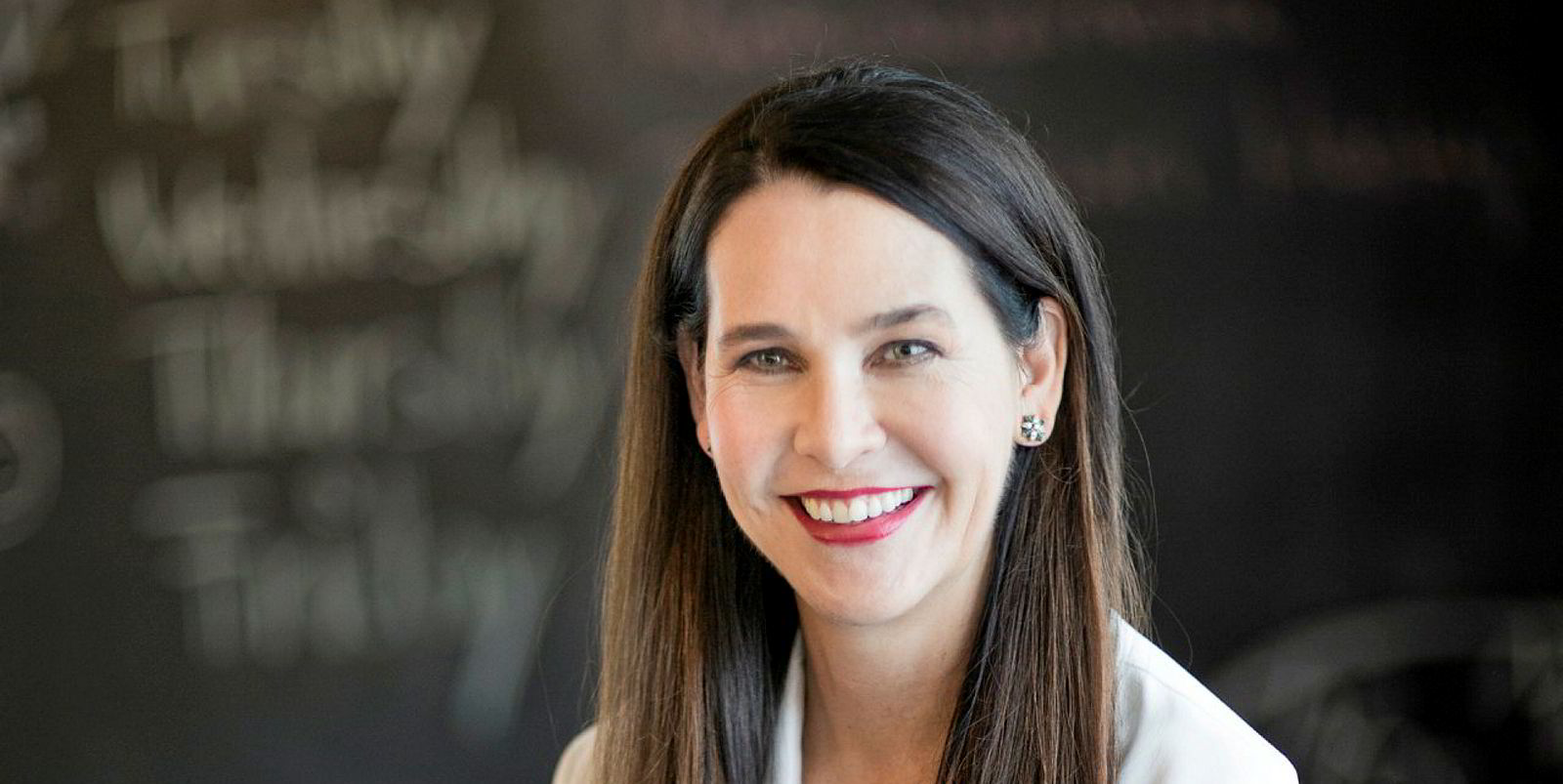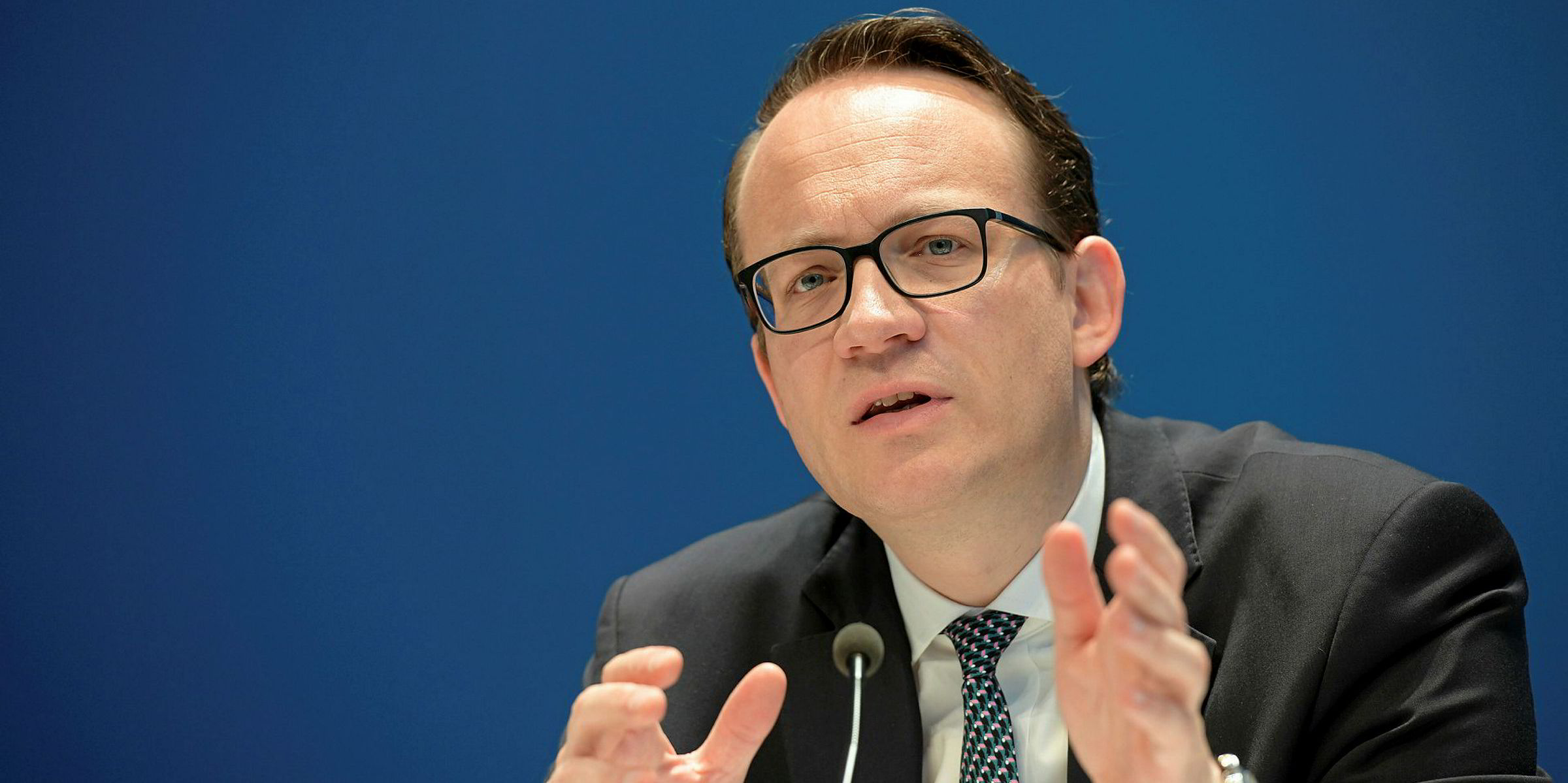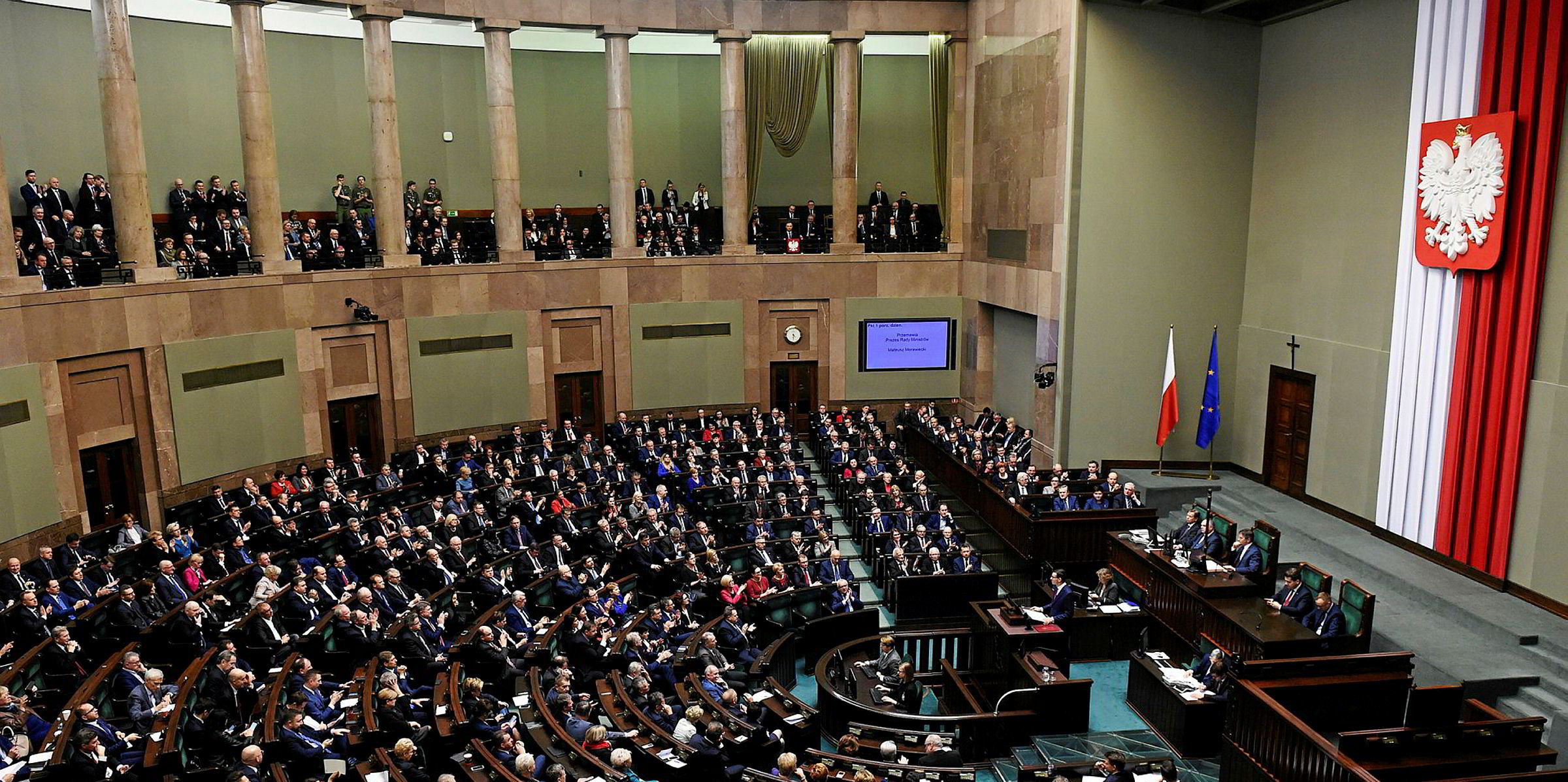Anja-Isabel Dotzenrath has just become chief executive of the new RWE Renewables, which bundles the renewable generation assets formerly belonging to RWE, E.ON and, as of early next year, those of former RWE unit Innogy.
As the new number 2 in global offshore wind, RWE has ambitious plans to expand its wind at sea operations into Poland, Japan, India, Taiwan and Korea, and is pushing for urgent action to plan for additional German offshore capacity.
What will RWE Renewables exact operating capacity be in offshore wind, and how large is its project pipeline once the Innogy assets are incorporated?
Once the Innogy Renewables business has been transferred to RWE, we will be the second biggest player in offshore wind globally with an offshore portfolio of 2.5GW. And we want to continue to grow profitably along the entire value chain with innovative technology solutions and our long-term expertise in the development, construction and operation of large offshore wind farms.
The ground for further growth has already been prepared: Triton Knoll, an 860MW wind farm off the English coast is currently being built and will be commissioned in 2021. In addition, our future joint development pipeline consists of offshore opportunities with more than 5GW, including recent tender wins covering more than 1.8GW in total, UK Crown Estate lease extensions for up to 750MW, and German step-in rights with up to 600MW.
And in addition, we have recently acquired an 1.5GW pipeline in Poland. We are geared for growth – strategically, with our projects and staff as well as financially. RWE intends to invest an annual amount of €1.5bn ($1.66bn) net in offshore wind, onshore wind, utility-scale solar and battery storage. This figure could rise to €2-€3bn by joining forces with partners. This will create 2-3GW of capacity, a large share of which will be added to our portfolio.
How much of the €1.5bn to be spent per year on renewables do you think will go into offshore wind?
We will pursue profitable growth opportunities across all our focus technologies: offshore as well as onshore wind, utility-scale solar and battery storage. We have not set fixed investment amounts per technology, but instead will invest in the most attractive projects in Europe, the Americas and Asia-Pacific.
RWE has pledged to become carbon neutral by 2040. That is even later than the already little ambitious year of 2038 in which Germany wants to get out of coal. Why so late? Does RWE not believe in climate science that states clearly that a faster decarbonisation is imperative to avoid a catastrophic climate change?
Quite the opposite. National and international climate protection targets and commitments of other energy companies aim for carbon neutrality by 2050. RWE is now taking this one step further and aims to be carbon neutral by 2040. We are a driver of the energy transition. And don’t forget: Germany will phase out coal by 2038. To ensure security of supply, gas-fired power plants will be needed beyond this date. That is why RWE is also investigating opportunities for green gas and is converting coal-fired power stations to fire biomass.
RWE has already reduced its greenhouse gas emissions by a third between 2012 and 2018. This amounts to a CO2 reduction of 60 million tonnes – comparable to taking 30 million cars off the roads each year. I know of no other company that has achieved more in the past years. Already today, around 60% of RWE’s portfolio is CO2-free or low in carbon.
Do you have the initial results of the RWE/Innogy feasibility study to build a 100MW green hydrogen plant at RWE’s Eemshaven power station? How important is hydrogen to your renewables strategy?
The CO2 reduction targets in transport, heat supply and industry can only be achieved if sector coupling is promoted and emission-free energy sources are used. We are convinced that green hydrogen will be an important component of a secure and clean energy supply for these sectors. Green hydrogen is produced in electrolysers that run on clean electricity – which we can deliver. That is why RWE has started projects in Germany, like GETH2 in Lingen and the feasibility study to build an up to 100 MW hydrogen plant on the site of RWE's Eemshaven power station. This is close to our Westereems Wind Farm, which could supply the green electricity to produce considerable volumes of green hydrogen.
In the past months, we worked out the feasibility of the hydrogen plant itself, in collaboration with other partners and with the regional and national authorities. We see a general demand for green hydrogen especially from industrial customers. But to serve this demand we believe it’s necessary to create more renewable generating capacity and to create markets with a clear regulatory framework supporting this technology.
You said offshore wind construction in Poland could start in 2023. Would that be for the 350MW that are relatively far developed and used to be from Baltic Trade & Invest, or for all of the 1.5GW you acquired?
Poland is a very attractive emerging market for offshore wind, and one with the best untapped potential in Europe. We made a deliberate decision to enter the market early by acquiring a pipeline of up to four offshore wind projects with a total generation capacity of more than 1.5GW. The envisaged offshore regulation is not in place yet. This process is expected to be finalised in 2020. As soon as this regulatory framework is established, we’re good to go, with the 350MW Baltic 2 project being the most advanced. But whatever we will do, it will obviously all depend on the framework the government is developing.
How do you see wind speeds in the Polish part of the Baltic Sea? Do you already have LiDAR results for FEW Baltic 2?
We already have LiDAR results for FEW Baltic 2 which have confirmed our expectations that the wind conditions in the Polish part of the Baltic Sea are quite favourable – and comparable to what we have seen with our Arkona wind farm in the German Baltic Sea. So, conditions look promising and we are pleased to have this newly acquired Polish project pipeline and the respective team with us.
Poland is discussing setting up a special deal so that the first batch of offshore wind developments can kick off construction early, and to only hold competitive tenders for a second batch. Would the 350MW be part of that first batch of projects?
We are carefully following the current discussions around setting up a regulatory framework for offshore wind in Poland. Accelerating the most advanced projects would speed up the transition of the Polish energy system and enable a fast build-up of a new industry sector and local supply chain. Auctions at this early stage of development in Poland would be less effective as there is only a very limited number of advanced projects. Nonetheless, all renewables support schemes need to be approved by the EU Commission. So, whatever regulatory approach the Polish government will develop with the support of Brussels, we are ready to contribute to build up a Polish offshore sector as soon as possible.
Germany’s government is choking off onshore wind with a new distance rule, but is raising the target for offshore wind to 20GW. Will that be enough to reach climate targets, or do you think Berlin should be even more ambitious in offshore wind along the lines of neighbouring countries (Netherlands, UK)?
Offshore will be the backbone of the European energy transition. So, increasing the German growth targets for offshore wind is an important positive signal for climate and industrial policy. Nevertheless, there is now an urgent need to properly plan and advance auctions for the additional 5GW. A steady growth path is needed, which means either additional earlier auctions, or auctions with bigger volumes.
We need increased targets for 2035 and 2040 to keep the momentum.
Additionally, I also see a need to align on an increase of offshore wind capacity beyond 2030. We need increased targets for 2035 and 2040 to keep the momentum. We also welcome the concept of special energy extracting areas (“besondere Energiegewinnungsgebiete”), where new offshore technologies in combination with, for example, green hydrogen production can be applied, which have more long-term lead times. But there are further regulatory steps needed to turn them into reality. Last but not least, it is essential for Germany to build the network infrastructure for future offshore capacity. Otherwise Germany will not meet its renewables targets.
With Arkona, E.ON already has experience in the Baltic Sea. Do you think Germany should aim for a faster expansion of offshore wind in the Baltic?
A clear yes. Germany has decided to increase the target for offshore wind capacity to 20GW by 2030 and should move the respective tenders and projects forward. That should include more and/or larger auctions every year and that definitely should cover both the North Sea and the Baltic Sea. Additionally, we would like to see more ambitious long-term targets in Germany to be defined beyond 2030 as well. Adding the European perspective: BEMIP (Baltic Energy Market Interconnection Plan) published a study concerning the offshore potential in the Baltic Sea and how international co-operation could create impressive efficiencies regionally. Co-operation on a European level will be an important aspect to meet the European climate targets.
Could you tell us a bit about your plans with Kyuden Mirai Energy in Japan?
The Japanese government has plans to considerably increase the role of offshore wind in electricity production. With clear regulations and a public tender scheme now in place, we see offshore wind as a crucial element of the transition away from fossil fuels to renewable energy. The government enacted a law earlier this year to enhance the development of offshore wind. It has identified 11 areas as potentially suitable for development, four of which were designated as "promising areas" where the preparation process, such as wind and geological research, will start immediately. The government will pick "promotion areas" and conduct a tender to select investors. That is why we expect Japan’s offshore wind industry to gain real momentum – and as RWE Renewables we want to be part of this growth.
Our strategy to become a leading offshore player in Japan is to join forces with Japanese partners, like Kyuden Mirai Energy. Their local expertise complements our global experience and technical know-how well. With Kyuden Mirai Energy we want to jointly develop, build and operate fixed bottom projects, in the Kyushu area and with a view to expanding the collaboration to other projects across Japan in the near future. The co-operation has started with a study to jointly select a project for development, construction and operation in the Kyushu area, the southernmost island of Japan.
The Chinese offshore wind market is expected to become the No. 1 market worldwide. Do you have plans to enter that market as well? If yes, could you tell us anything?
Our aim is to actively pursue and unlock opportunities for offshore growth worldwide. Therefore we have an eye on several markets in the APAC region: Japan is certainly the market where we have spent much of our time and been the most engaged so far, but we are also looking at Korea, Taiwan and India for example. We continue to monitor China but consider this less relevant for the time being.




